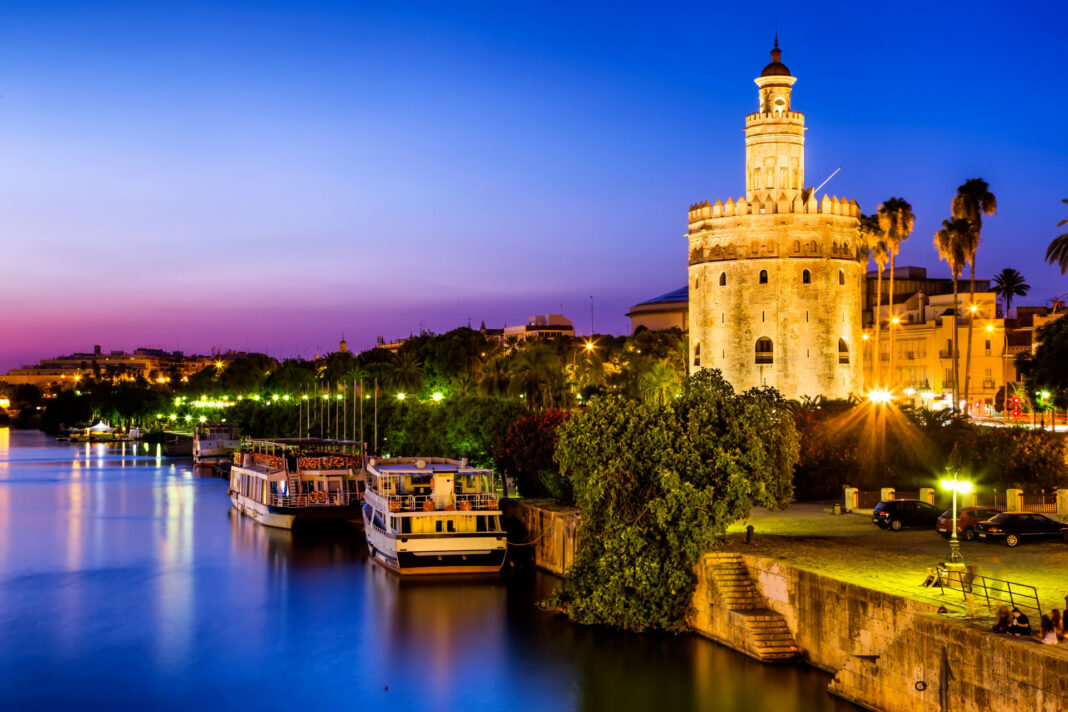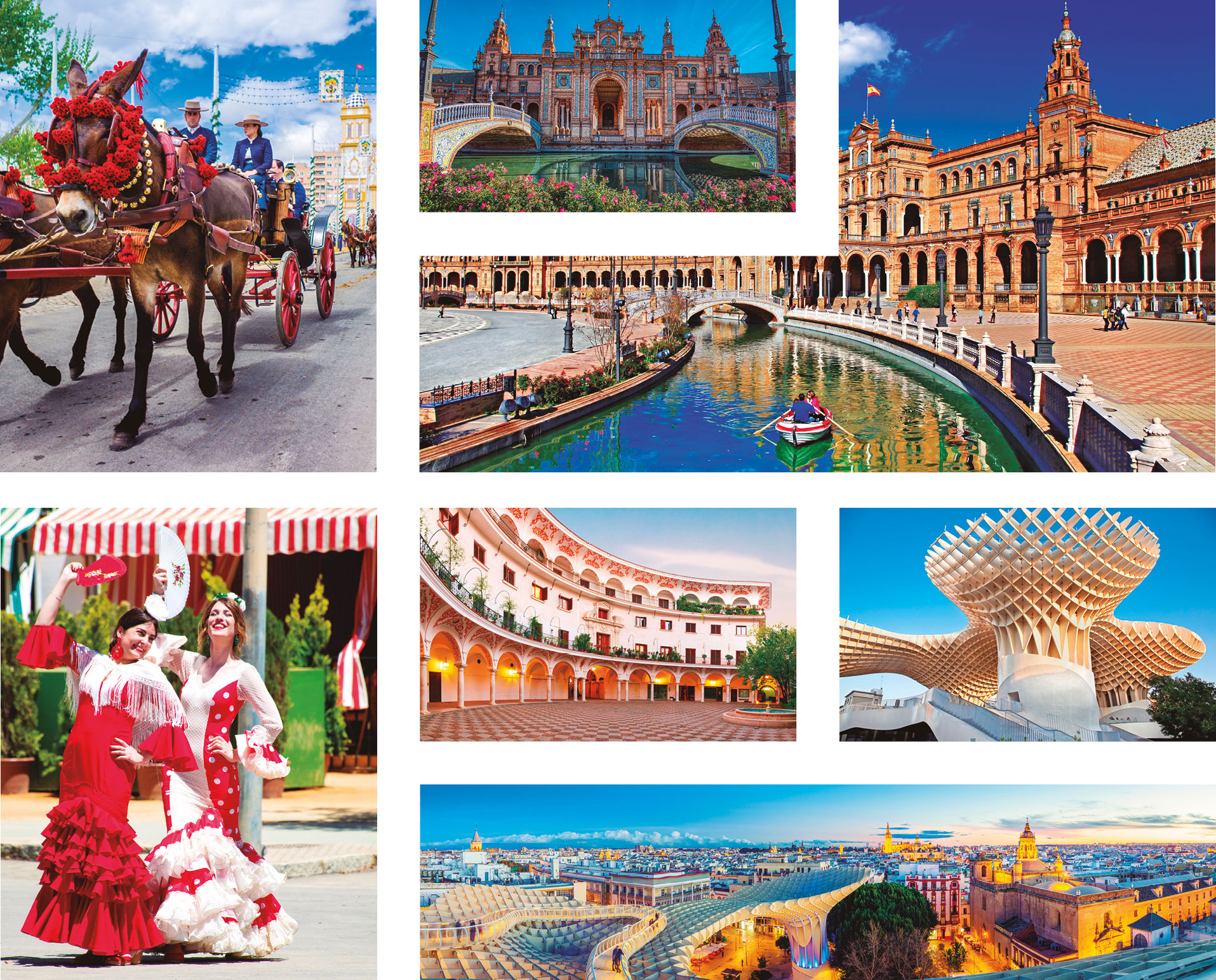Spring in Seville sparks an explosion of sensations. Fervour and passion are as palpable as the incense and orange blossom that fill the air
Considered one of the most beautiful cities in Spain, the splendour of Seville veritably blooms in spring. The blossoms of 40,000 orange trees perfume the streets and, in the pleasant warmth of long afternoons, the two most important events of the year take place: Holy Week, from 2nd – 9th April this year and the Feria de Abril, which runs from 23rd – 29th April. Whether before, during or after, Seville is a city that seduces.
A sense of magic fills the narrow streets of Santa Cruz, the old Jewish quarter. A few minutes walk away are the Royal Alcazar Palace and the Gothic cathedral, the second largest in the Catholic world. Its iconic bell tower, the Giralda, pierces the sky with its Moorish minaret. The spectacular Plaza de España, designed by Aníbal González is just a short stroll from here and beyond that beckon the peace and quiet of Parque María Luisa. With many buildings on the Avenida de la Palmera, the Plaza and the Park were built for the 1929 Universal Exhibition.
Historical Seville hosts Holy Week celebrations all around the city, including the Triana district on the other side of the river Betis, the Roman name for the Guadalquivir. It’s easy to imagine beloved matador Juan Belmonte peering across at the magnificent Real Maestranza bullring from Triana’s Altozano square. The only way across was via the iron bridge which unites and separates Seville from the ‘Emotional Republic of Triana’ – so famous for producing passionate Flamenco artists and bullfighters.
Breathing the same air is contemporary Seville with its university, tourism and cosmopolitan vibe. Modern architectural marvels include Calatrava’s Alamillo Bridge, built for Expo’92, the remarkable Metropol Parasol, known as the ‘Mushrooms of Seville’ and Pelli Tower the city’s only skyscraper, which if the angle’s right, looks the same height as the 13th century Torre de Oro.
At Eastertime, the aroma of orange blossom is accompanied by wafts of incense from the religious processions. Andalusia’s baroque grandeur is carried on the shoulders of the faithful as they parade through the streets. Precious statues are held aloft, some dating back to the 16th and 17th centuries, sculpted by baroque masters Martínez Montañés, Francisco de Ocampo, Juan de Mesa, Pedro Roldán and his daughter, Luisa ‘La Roldana’. They are carried on elaborate floats awash with gold, silver and velvet. The scenes are a dramatic expression of religious fervour and brotherhood as the parade moves to the beat of drums and bugles before the gaze of thousands of spectators.
More than forty brotherhoods participate, each comprising thousands of penitents or Nazarenes. Especially significant is the ‘Madriga’, the period between the early hours of Holy Thursday and Good Friday, when the Gran Poder, Macarena, Esperanza de Triana and Los Gitanos fraternities take to the streets.
The cobblestones still echo with the sound of bare feet on the wax left by the processions when the whole of Seville and beyond head for the Feria de Abril. The lighting ceremony at the gateway to the fairground signals the official opening, inviting revellers to flock to the thousands of striped casetas, or tents, which serve up a party atmosphere.
To the rhythm of Sevillian Flamenco, the Feria is set against a backdrop of polka dots, shawls, flowers and lanterns, striped curtains, mirrors, potted red geraniums, carnations, horse-drawn carriages, horses with riders and flamenco ladies sitting side-saddle… and thousands of litres of manzanilla – not the type that comes in a teabag, but the bottled sherry kind – sipped amid scenes of laughter, kisses, hugs, jugs of rebujito spritzer, beer aplenty and plates of ham, pork loin, prawns, tortilla, peppers and fried fish.
…All to the power of several zeros. Because the Feria de Abril is a celebration that overflows with joy and excess in every way.





